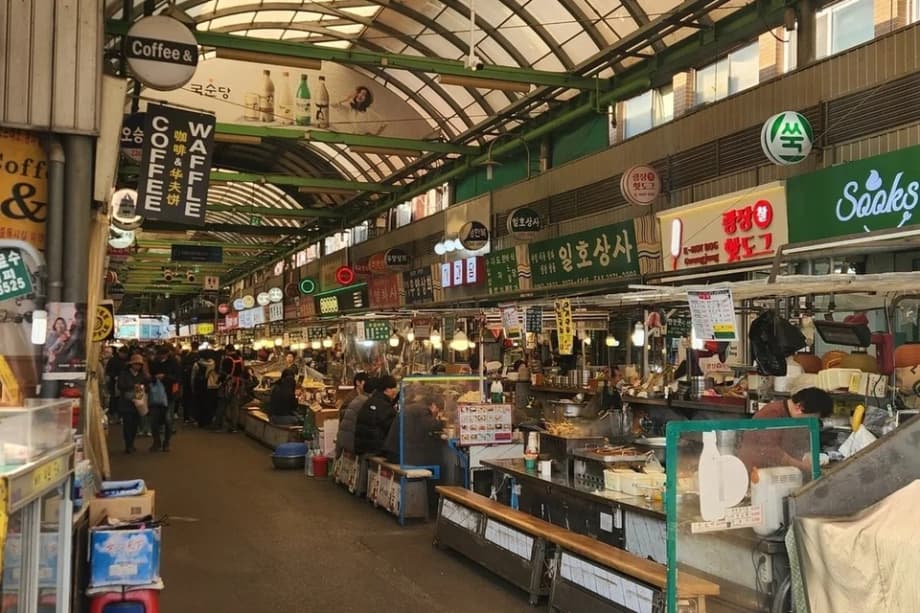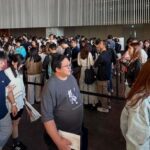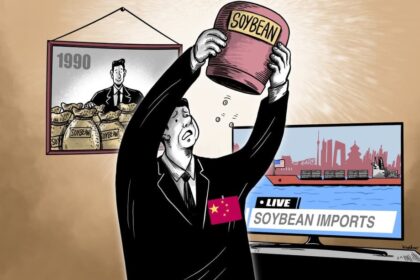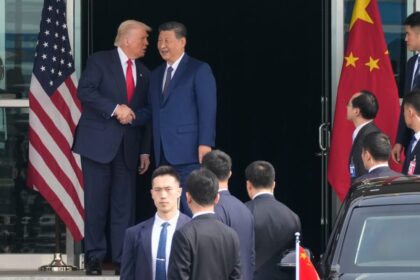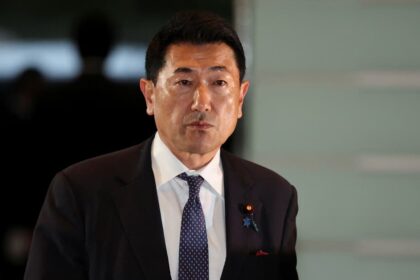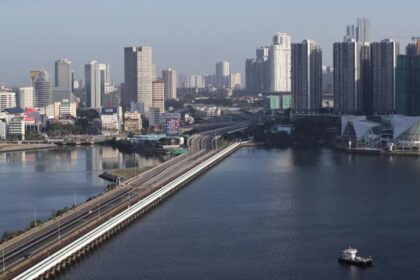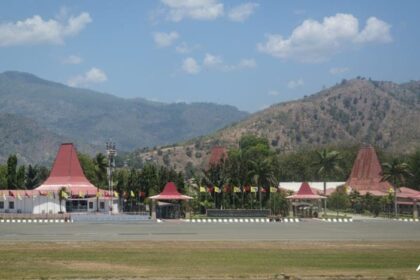Viral video triggers merchant feud at a Seoul landmark
One of Seoul’s best known traditional shopping and street food destinations is now the scene of a legal showdown. The Gwangjang Market Merchants Association says it will file a 300 million won damages suit against the neighboring Gwangjang Traditional Market Merchants Association after a viral overcharging controversy tarnished the market’s image. The two groups represent different parts of the same complex. The main market association speaks for about 200 stores inside the central building. The traditional market association oversees roughly 250 food stalls and small shops that ring the site. Visitors rarely notice the difference, and that is central to the dispute.
- Viral video triggers merchant feud at a Seoul landmark
- What sparked the backlash at Gwangjang Market
- Two markets, one brand image
- Discipline and rule changes, explained
- Are prices at Gwangjang Market higher than elsewhere
- A historic market balancing tradition and trend
- What could the lawsuit argue
- Practical tips for visitors
- Key Points
Merchants in the main building say the overcharging claim arose at a stall outside their control, yet the fallout spread to every corner of the broader market. They argue that the viral video drove customers away and caused measurable losses. More than 200 members signed a compensation demand that was delivered to the stall association. The stall association has not issued a formal response. The Jongno district office, which oversees administration in the area, has met both sides. Officials say they will not intervene while court action is not active. The district plans to introduce a real name verification system for stall operators by the end of 2025 to tighten accountability.
What sparked the backlash at Gwangjang Market
The dispute exploded after a popular YouTuber posted a video on Nov. 4 describing an argument over the bill at a stall that sells sundae, a Korean blood sausage dish. The customer said the menu listed 8,000 won, but she was charged 10,000 won after the vendor added extra meat. She also complained of rude service. The merchant countered that the customer had agreed to the add on. The clip drew huge attention online, with views surpassing 16 million, and it spurred a wave of posts from other diners recounting similar experiences.
Within days, the stall was hit with a 10 day business suspension by the traditional market association. Market leaders said the punishment was intended to calm public anger and set a clear line on posted pricing. The vendor closed for the penalty period. The incident also brought attention to how extras and combination plates are sold at busy food stalls, where quick orders and crowded seating can lead to confusion about portions and prices. The core rule in Korea is simple. The price on the menu is what the customer should pay unless both sides agree in advance to any add on.
Two markets, one brand image
Although the main market building and the surrounding traditional market are managed separately, most visitors see them as a single destination. This shared perception benefits the area when famous food videos go viral, but it also spreads damage when a scandal breaks. The main market association says the overcharging claims, which centered on a stall under the traditional market association’s jurisdiction, hurt shops that had nothing to do with the case. Foot traffic fell, sales slowed, and the entire market was labeled an overcharging zone by angry commenters.
In a certified letter sent this month to their counterparts, leaders of the main market association framed the dispute as a defense of a civic landmark. They wrote that the reputation of the entire market was at stake and that stronger discipline and clearer practices were needed to restore trust.
Gwangjang Market is the history of Seoul and the pride of South Korea. We will no longer tolerate the tarnishing of the market’s name.
Merchants argue that confusion over which group runs which area makes it difficult for visitors to assign blame accurately. One restaurant operator described fixed costs such as rent that can reach about 20 million won per month, and said sales in recent weeks dropped to levels last seen during the pandemic. The plea from many shop owners is straightforward. They want stricter oversight of problem stalls and a common standard for pricing and service that protects the entire destination’s brand.
Discipline and rule changes, explained
The first round of consequences fell on the stall at the center of the viral video, which received a 10 day suspension. Market leaders say they are expanding merchant education and complaint handling. Past pledges included training on service quality and clearer menu displays. Critics, including some merchants, argue that voluntary education alone will not solve the issue in a place this busy, with many small, independent operators and constant tourist turnover.
What the district will change
Jongno district says it will introduce a real name verification system for roughly 250 stalls by the end of 2025. The plan is to link each stall to a registered owner and require clear identification at the point of sale. That could make it easier to enforce suspensions and collect fines, and it reduces the chance that a stall quietly changes hands or uses a stand in when trouble arises. Stronger identification also makes complaint tracking more reliable and gives visitors a way to confirm that a stall is operating under proper registration.
Attempts at transparency
Market leaders have promoted QR menu boards that display photos and multilingual descriptions to help visitors understand portions and prices. Association figures indicate that adoption is not yet universal, with fewer than all food stalls using the system. Card payment acceptance, another basic for consumer protection, is also uneven. Some stalls rely on cash, which complicates refunds and record keeping. The district has started to collect road occupancy fees from stalls in the traditional market area, a move intended to formalize how public space is used. Street stalls that operate on public roads cannot obtain ordinary restaurant permits under the Food Sanitation Act, which makes oversight and sanitation enforcement more challenging. Better labeling and a stronger paper trail are meant to counter these structural limits.
Are prices at Gwangjang Market higher than elsewhere
Many visitors come for a once in a lifetime experience, which can push demand and prices above neighborhood averages. Some stalls serve smaller portions or specialty items at premium rates. Recent observations by shoppers pointed to examples like a 3,000 won plate of tteokbokki with only a few rice cake pieces, fish cake skewers priced at 1,500 won compared with 1,000 won at general shops, and a single live octopus sold for 18,000 won, which is higher than the price at large seafood markets. Stall owners often respond that they pay higher rents and face heavy tourist flows that require more staffing and prep, which raise costs.
What crosses the line is not a higher price by itself, but charging more than the posted price or adding items without clear consent. In Korea, menus should be visible, card payment is widely available in formal shops, and there is no tipping custom. The safest approach for diners is simple. Look at the price board before you order. Confirm the portion size and any extras out loud. Ask for a receipt, which makes any dispute easier to resolve. Visitors have also shared accounts on social platforms describing inconsistent pricing and aggressive upselling late at night when crowds thin, a reminder to check the board and walk away if something seems unclear.
A historic market balancing tradition and trend
Gwangjang Market is more than 120 years old and is known as Korea’s first permanent marketplace. It started as a hub for fabrics and household goods, then became famous for mung bean pancakes, knife cut noodles, dumplings, and assorted jeon. In recent years, K fashion brands have opened stores in and around the complex, and global chains have added themed outlets. The Starbucks at the market leans into retro design with fabric shop motifs and a rooftop photo zone. On weekends, vendors say a large share of customers are visitors from overseas who come to eat, film, and shop in one place.
This transformation created a market that blends tradition and pop culture. It also raised pressure on stall operators as lines grow and social media fuels constant expectations. When service falters or prices feel opaque, backlash spreads quickly and can engulf responsible shops along with the few that drew the complaints. That dynamic is why merchants say consistent rules matter, and why the lawsuit presses the point that brand reputation is shared.
What could the lawsuit argue
The main market association says it will seek damages for economic loss tied to the viral case at a stall under the neighboring association’s oversight. In practical terms, the claim will need to show a direct link between the stall incident and lost revenue for unrelated shops, along with the legal duty of the stall association to prevent the harm. In Korean civil cases, plaintiffs must demonstrate actual loss and causation. The defense could argue that the fallout came from online reactions rather than negligence, or that corrective steps like a 10 day suspension were proportionate.
Courts in such disputes sometimes steer both sides toward a settlement or a detailed code of conduct. That could include standard menus, mandatory card terminals, a complaint hotline, and consistent penalties for violations. The district office says it will not intervene while litigation is not in progress, but its real name system and administrative measures will continue. The legal process will likely take time, and both sides know the longer the fight goes on, the harder it is to restore trust among visitors.
Practical tips for visitors
Thousands of people enjoy Gwangjang Market every day without incident. A few habits can make your visit smoother and protect your wallet.
- Check the posted menu and prices before you sit down.
- Confirm portion size and extras in plain words. If you do not want add ons, say so clearly.
- Ask for a receipt and pay by card when possible.
- Use QR menus where available to see photos and multilingual descriptions.
- If staff quote a price that does not match the board, decline politely and try another stall.
- If you prefer a more local feel, try places like Namdaemun Market in Seoul or BIFF Square in Busan, which have clear pricing and varied options.
Key Points
- Gwangjang Market Merchants Association plans a 300 million won damages suit against the neighboring stall association after a viral overcharging case.
- The viral video posted on Nov. 4 alleged a charge of 10,000 won for a dish listed at 8,000 won and criticized rude service. Views topped 16 million.
- The stall at the center of the clip received a 10 day business suspension from the traditional market association.
- Merchants in the main building say confusion between two separately managed areas spread reputational damage to shops outside the stall association’s control.
- More than 200 shop owners signed a compensation demand. The stall association has not issued a formal response.
- Jongno district will roll out a real name verification system for stall operators by the end of 2025 to tighten accountability.
- Transparency measures such as QR menus and wider card acceptance exist but adoption is uneven, according to association figures.
- Past complaints about pricing and portions at traditional market stalls have resurfaced, fueling calls for stricter oversight and clear menu boards.


